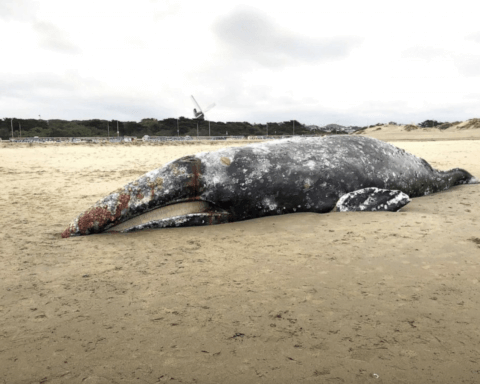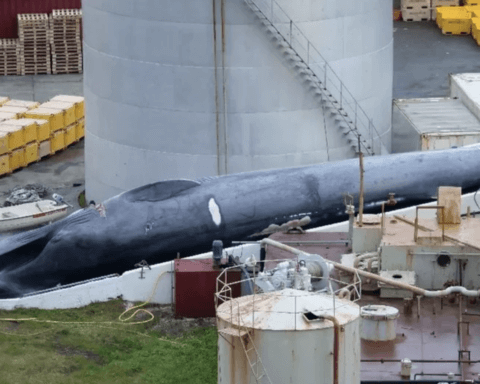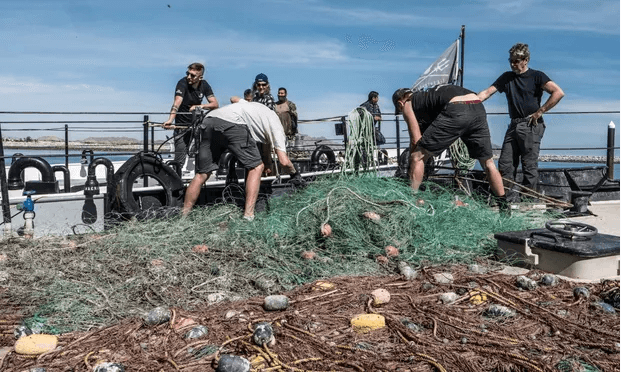We are currently facing massive areas on land and under the sea that are dead. It’s irrefutable and bloody frightening.
Man, the superpredator, is the culprit.
Combusting fossil fuels and tearing down old-growth (native) rainforests to chop up into tiny pellets to be burned as filthy biomass power is adding the equivalent heat into the oceans of dropping 10 Hiroshima atomic bombs every second of the year.

Image credit: Andrew Harnik
The oceans drive Earth’s climate.
Trees are very sensitive barometers of heat. In the springtime, deciduous tree buds require a precise amount of heat energy in order to expand and grow flowers to make seeds, and leaves to absorb carbon dioxide and store it as wood.

Image credit: Faye Cornish
For 1,209 years, the imperial court records in Kyoto, Japan, have been recording the exact date of cherry blossoms, a traditional sign of spring. This year, 2021, was the earliest bloom since the inception of continuous record keeping in 812 AD. It’s getting hotter much sooner. The trees don’t lie.
In 2020, razing the world’s old-growth rainforests surged. Amid the COVID-19 pandemic, rumbling bulldozers and wining chainsaws destroyed an area of untouched primeval rainforests more than half the size of the island state of Tasmania, Australia, or, 10.4 million acres. That is a 12 percent increase over 2019’s ruination of nature.

Image credit: AP
The worst losses were incurred in Brazil, three times that of the second highest offender, the Democratic Republic of Congo. This year, 2021, may even be worse. Two million two-hundred thousand acres of exquisite Papua New Guinea rainforests are being swapped, right now, for more monoculture palm oil and rubber plantations, soybeans for livestock feed and the burgeoning $50 billion wood pellet (biomass power) industry to create more heat and roast whatever remains of Mother Earth.
Ludicrous.

Image credit: Billy Snee
Climate fires and climate droughts lambasted Australia in 2020, they devoured 42 million acres – a nine-fold increase in tree cover loss. Also in 2020, record areas of climate fires scorched Siberia’s old-growth and gutted the heart of the largest remaining tropical rainforest, the Amazon.
Ladies and gentlemen, nature doesn’t lie.
Satellite imagery is proof positive that climate fires and climate droughts are worsening rapidly.

Image credit: Mongabay
The man-made climate crisis is thrashing the oceans. Fossil fuel and wood pellet heat is stoking recurring and more intense marine heatwaves. Those marine heatwaves have turned the richest assembly of oceanic life on coral reefs into ginormous godawful bleach-white boneyards.

Image credit: Earthjustice
A March 2021 Australian Academy of Science report forewarns that at 1.5C (2.7F) degrees of warming, the remaining Great Barrier Reef will shrivel by 70 to 90 percent. (In 2020, Australia’s average temperature increased by 1.44C [2.59F]). At 2C (3.6F) degrees, my colleagues predict that just one percent of the reef would survive. Unfrackin’ acceptable.
It’s up to each of us to embrace veganism, consume less and force governments to stop the annual $5.3 trillion subsidies to the fossil fuel oligarchs and their wretched corporations.

Image credit: Reese Halter
In addition, protecting all the remaining old-growth forests is crucial to slow down these hideous man-made heatwaves. Only one percent of the existing trees on the globe are spellbinding giants. They live in the world’s last old-growth rainforests and hold 50 percent of all the stored terrestrial above ground carbon (wood). These beauties are sacrosanct.
Ladies and gentlemen, nature doesn’t lie. We cannot live on this planet without breathing, dripping, mesmerizing old-growth rainforests and all life therein, as well as thriving coral reefs. It’s a now or never moment, so join Fridays For Future and become a climate agitator and protestor. It’s our only home; we must defend it!
#LoveIsTheSolution
#LoveNature
#ZeroCombustionEconomy2030
#RefusePlastics
#GoVegan
#HugATree
#WalkMore
#Smile
#GenZEmergency
•••••••••••••••••••••••••••••••••••••••••••••

Dr Reese Halter is an award-winning broadcaster, distinguished conservation biologist and author.
Dr Reese Halter’s latest book is now available!
GenZ Emergency
Tweet @RelentlessReese
•••••••••••••••••••••••••••••••••••••••••••••

Fossil Fuels and Deforestation
Fossil Fuels and Deforestation
Fossil Fuels and Deforestation












